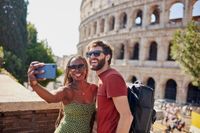On August 20, 2025, the United Kingdom played host to a unique blend of politics and tourism as US Vice President JD Vance embarked on a working visit that seamlessly mixed high-level diplomacy with a dose of leisure. His trip, which began at the Chevening estate in Kent alongside British Foreign Minister David Lammy, offered a window not only into the current state of US-UK relations but also into the ways American presence—political or otherwise—stands out on European soil.
According to official reports, Vice President Vance kicked off his British sojourn with a bilateral meeting at the storied Chevening estate. The agenda was both formal and relaxed: after talks with David Lammy, the two men went fishing, blending policy discussions with the quintessentially British pastime. This mix of business and pleasure, it seems, is becoming something of a hallmark for Vance, whose recent travel itinerary has included skiing in Vermont, a family getaway to Disneyland, and canoeing in Ohio.
But Vance’s visit to the UK was not without its share of controversy. As he made his way to the picturesque Cotswolds village of Dean, local sentiment was decidedly mixed. Protesters in the nearby town of Charlbury staged a spirited “Not Welcome Party,” voicing opposition to the Vice President’s politics and policies. The demonstration, though peaceful, underscored the ongoing debate in Britain about the direction of US leadership and its ripple effects across the Atlantic.
Vance’s schedule was packed with more than just fishing and sightseeing. He was slated for meetings with Conservative politician Robert Jenrick and Reform UK leader Nigel Farage, signaling an effort to engage with a wide spectrum of British political voices. These planned encounters reflect a pragmatic approach to diplomacy, one that acknowledges the shifting tides of British politics in the wake of Brexit and ongoing debates about national identity and sovereignty.
Yet, as much as the Vice President’s visit drew headlines, it also shone a spotlight on the broader phenomenon of American travelers in Europe. As European travel experts told The Independent, Americans abroad are instantly recognizable—not just by their accents, but by a constellation of habits that set them apart from their European counterparts.
One of the most obvious giveaways? Volume. Jiayi Wang, a London-based travel blogger and photographer, explained, "[Americans'] conversations carry across a tram or café, full of enthusiasm. Locals tend to keep public chatter lower, so that livelier pitch draws attention straightaway." Lucinda Faucheux, co-founder of Travel Support Circle, echoed this sentiment: "Americans tend to speak much louder than locals, even when they're just having a casual conversation. In a quiet English pub or a small village café, a group of Americans chatting can unintentionally dominate the space. It's not meant rudely, but the contrast is obvious."
But it’s not just about decibels. Americans are known for their openness and willingness to strike up conversations with strangers. Albin Eriksson Lippe, CEO of Holiwise, noted, "It is not uncommon to find an American tourist joining a conversation with strangers after overhearing something they've said, or offering effusive praise of the place they're in." German photographer Nico Trinkhaus added, "Americans are some of the most open and approachable travelers I meet. It's not unusual for them to strike up small talk in places where most Europeans stay silent—like waiting for an elevator or watching a sunset."
When it comes to fashion, comfort reigns supreme for American tourists. As Jiayi Wang observed, "Comfort comes first. So you notice bright sneakers, cargo shorts, and T-shirts stamped with college logos or sports teams. In cities where most people lean toward neutral tones and fitted cuts, that splash of branding makes the wearer stand out the minute they step into a piazza."
Another notable habit is the way Americans carry their backpacks—often on the front in crowded metro cars for security, with a refillable 700ml drink tumbler dangling from a carabiner. LP Maurice, CEO of Busbud, remarked that this style, along with the frequent pinging of Apple Watches as Americans check sports scores back home, makes them easy to spot in any European city.
Navigation is another area where cultural differences emerge. Sarah Topalian Davies, director of communications at Earthday.org and a Brit living in America, recently returned from Rome and shared her observations: "American tourists seem to have no sense of other people, spatially. They aren't rude, but they just don't understand that while they are on a five-day whistle-stop tour of Europe, many other folks around them might live here and are trying to go to work. The slow walking and dawdling are deeply annoying to everyone. They also stroll two or three across on a busy street and seem oblivious to everyone else, including yelling policemen."
Americans’ curiosity about the value of historical treasures also raises eyebrows among locals. Davies recounted, "Americans ask the fiscal value of everything rather a lot. For example, I was in the Vatican and a young American man trying to impress his girlfriend, I think by looking engaged, kept asking, 'What is that worth?' That is such an American trait."
When it comes to dining, Americans tend to stick to the main tourist thoroughfares and often eat dinner around 6pm—well before most European kitchens are ready. Jiayi Wang noted, "Americans like to sit down for dinner around 6pm, while European kitchens are still prepping for the night. They are quick to ask for tap water packed with ice, request menu tweaks like 'no cheese', and look puzzled when refills cost extra." Credit cards are the default payment method, and the surprise on Americans’ faces when a café is cash-only often speaks volumes.
Perhaps no trait is more appreciated by European service workers than Americans’ tipping habits. Davies observed, "If you are a waiter and you get a huge tip for no extra discernible level of elevated service, it was 99 percent an American who tipped you—as they are unbelievably generous with tips. Twenty percent is not unusual and they expect to do it. Plus, American tourists will love everything you give them and are very unlikely to complain."
Americans also love to discuss their roots, often identifying as Irish American, Italian American, or German American. Davies quipped, "If you hear someone claiming to be originally from that very location you are visiting—it is 100 percent an American. Everyone is Irish American, Italian American, German American. Nobody is just plain old, American, American."
Finally, the American approach to sightseeing is fast and furious. Jiayi Wang summed it up: "Their sightseeing style completes the picture. Cameras with large lenses, GoPros, and selfie sticks hang from straps as they hurry from one landmark to the next. The plan is to see as much as possible and record every minute, so the pace feels more like a race than a ramble."
As Vice President JD Vance’s visit demonstrates, the American presence in Europe—whether official or touristic—remains both distinctive and, at times, divisive. From the halls of Chevening to the cobblestones of the Cotswolds, Americans continue to make their mark, for better or worse, in ways that are impossible to ignore.




